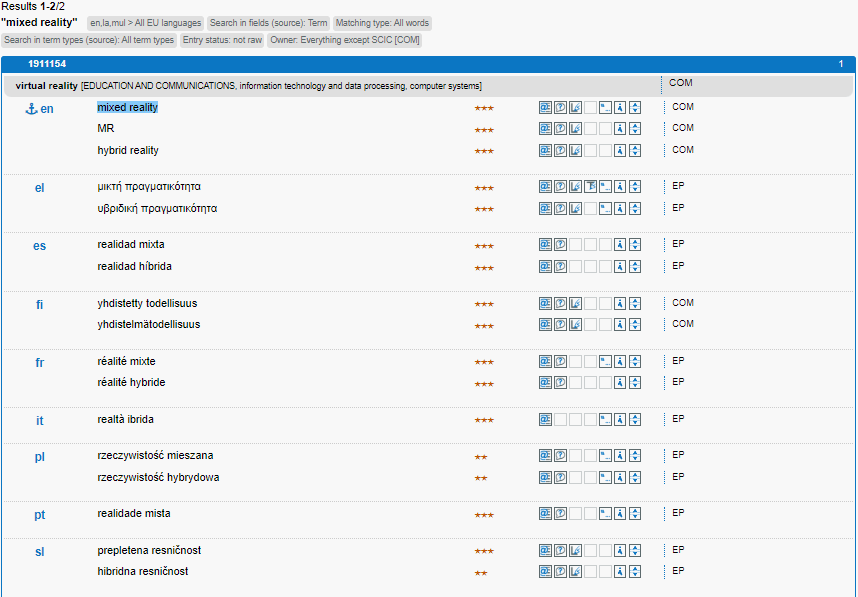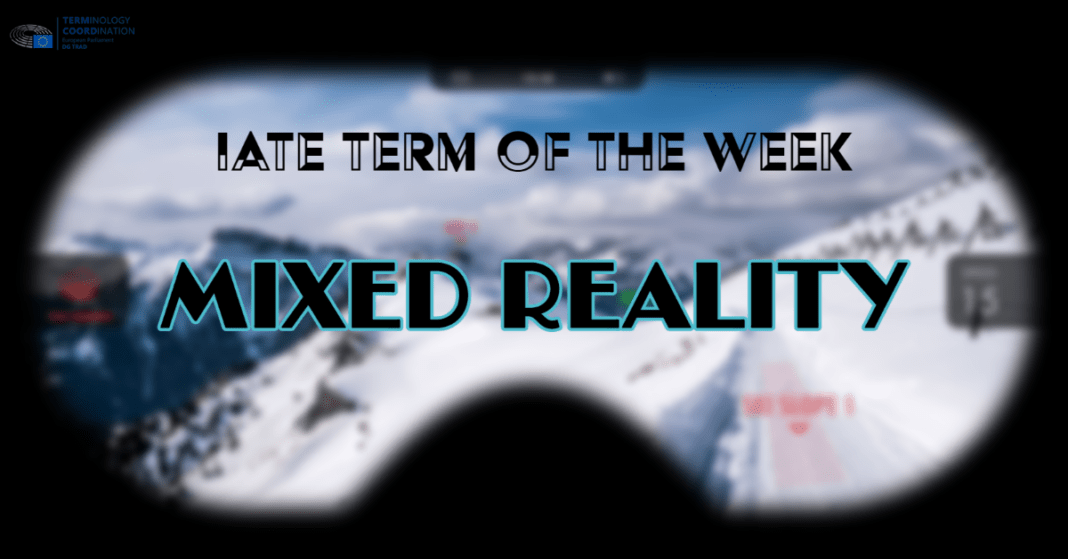Maybe the reader remembers Mary Poppins, a movie were reality and cartoons coexisted. The concept of “mixed reality” is close to this coexistence of reality and cartoons, but there is also an additional dimension of interaction. “Mixed reality” is defined in IATE as “merging of real and virtual worlds to produce new environments and visualisations in which physical and digital objects co-exist and interact in real time”. It is important to highlight the part “physical and digital objects co-exist and interact in real time” in order to differentiate “mixed reality” from other realities.

Mixed reality is made possible thanks to, on the one hand, a technology which allows for capturing real-world images by a combination of cameras and sensors, and, on the other hand, a technology which allows for transferring these images into a virtual environment with a 3D model. This intermediate result is then combined with digital content in order to create a perfect combination of the physical and virtual worlds.
To better understand the concept of mixed reality, one needs first to understand these two other types of reality:
- virtual reality, which is a simulated 3D environment, and
- augmented reality, which is an interactive experience in which a real world environment is enhanced with computer-generated visual elements, sounds, and even smells.
In short, mixed reality, combined with virtual reality and augmented reality results in extended reality (XR).
Mixed reality can be used in many interesting ways. In education, students can get immersed into a specific experience for educational purposes, and in some universities, medicine students have the possibility to study physiology on the basis of 3D representations of physiology models. In entertainment, the videogame worlds created a perfect example of mixed reality named “Mario Kart Live: Home Circuit”, in which it is possible to play the videogame in real environment. And there are many more fields of application, like remote working, military training, healthcare service etc.
The European Commission is supporting research and innovation in the framework of a European XR ecosystem in order to ensure that European values are upheld. The Commission is also encouraging cross-collaboration between various disciplines and domains, with a special focus on industry and small and medium enterprises, which will help Europe to become a leading power in XR.
References
https://en.wikipedia.org/wiki/Mixed_reality
https://digital-strategy.ec.europa.eu/en/policies/extended-reality
https://valleyai.net/how-does-mixed-reality-work
Written by David Sánchez Wanthawong

Born in Madrid, Spain, David holds a Bachelor’s degree in Telematics Engineering from the University Carlos III of Madrid. He is also half Thai and has participated in some Erasmus+ YE that made him want to know more about cultures. After working in software quality assurance in the private sector, he is now a Schuman Trainee at the Applications & IT Systems Development Unit in the EP’s DG for Translation.

